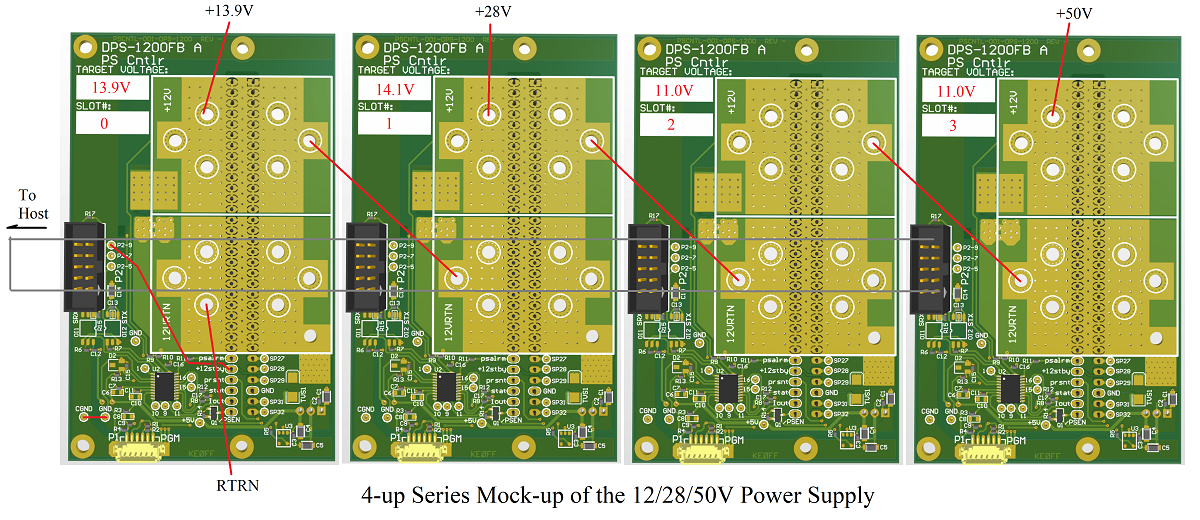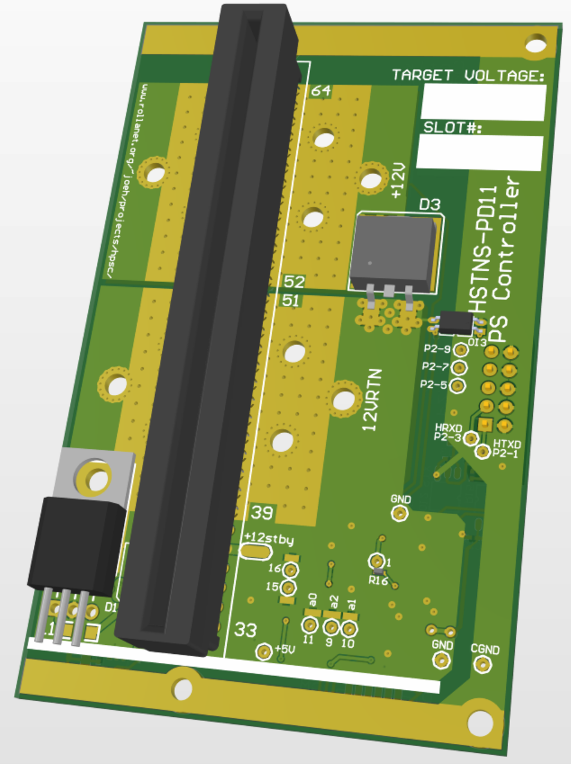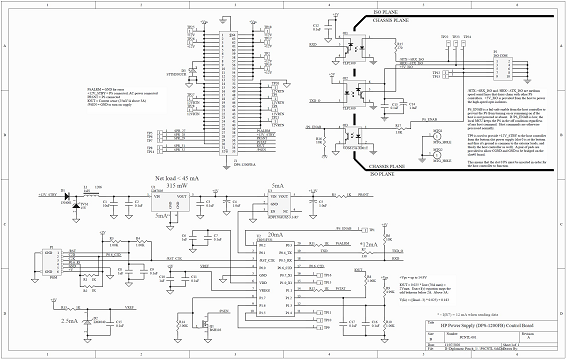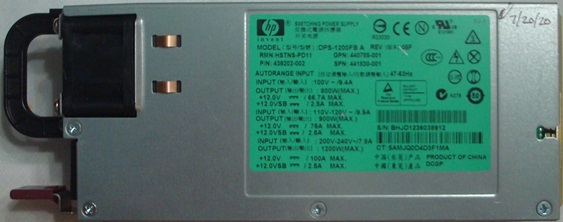The C8051F530 is an MCU I’ve used on several other projects, so it was the clear choice here. I only needed some timer resources, the UART, and the on-chip ADC. I located an opto-isolator that could
accomodate speeds in excess of 400K baud, tho I'll likely run it slower than that. 38.4K is my minimum desired rate. One of these devices for "TX" and one for "RX" connected so that each side of the UART link
is wired "multi-drop" style with an open collector on the slave-RX (SRX) and an LED on the slave-TX (STX). The host drives the RX line with a device that can source 15 or 20 mA with reasonable edges. The
Host receives the TX signal and can buffer with a schmitt-trigger style gate.
For the power supply side of the optical barrier, the signals I want to process are: PS Alarm (pin 38, out from the supply), Power supply Present (36), Power supply status (35, out), Imeasure (34, out), and PS
Enable (33, in). The documentation for these signals has not been easy to locate. I've found some folks who have blazed the trail before me, but they didn't appear to be working from an official document
which described the function of these signals. Faced with a lack of info, I will simply capture signals, and display their status for now. As thier functions become more well understood (or verified) I will
take steps to act on them in realtime.
So, in a nutshell, to make the supply function, one needs to apply a current limited 3.3V to the Present pin (36), and ground PS Enable (33). This will be accomplished with a UART command. The output
voltage and Imeasure values are periodically captured and stored. The protocol for the dual-multi-drop UART doesn't allow for the slaves to detect collisions when they transmit. As a result, the protocol
prohibits unsolicited UART messages from the slaves. This means that each slave will have to be periodically polled to get their current status. So, the ADC must continually sample and store results for
the two analog signals to be monitored: the +12V PS output, and the Imeasure pin from the supply.
The +12V (up to +14V) monitor uses a simple resistive voltage divider to present a signal to the MCU ADC. The ADC uses an external 2.5V reference, so the divider needs to ensure that the maximum possible
voltage can be reduced to 2.5V or less. Something in the range of 15 to 17 Volts is the current target. For the Imeasure signal, the initial observations are that the slope of the output is about 25mV/ADC
above 3A. Below 3A, the slope starts out at around 60mV/A and begins to taper off towards 25mV/A between 2A and 3A. Worst case this means that Imeasure will be just under 2V for a 70A load. I have only
characterized Imeasure between 0A and 20A, as this is the range of my electronic load. I need to find a way to spot check it out beyond 20A.
Most of the rest of the design has to do with carefully handing the high-current terminations and routing. 2oz copper is one mitigation employed here. Another is to use a lot of stitching vias with a decent
size drill hole. Another debate is whether to fill these via holes with solder, PbSn or Ag laced (4% Ag solder gives a small improvement to conductivity) - I think the interconnect resistance will be low enough, so I
am reserving this option for later consideration.
I'll construct a rack for the 4 supplies, so they will be mounted close to one another and one of these controller boards will attach to each (the image below illustrates the target layout and interconnects). The
host electronics will provide a simple UI via an LCD and possibly a 4x4 keypad (for the moment, I only have a use case for one or two buttons, but may want to have the ability for numeric input if it turns out
that there are configuration steps required at the host controller level.

|



